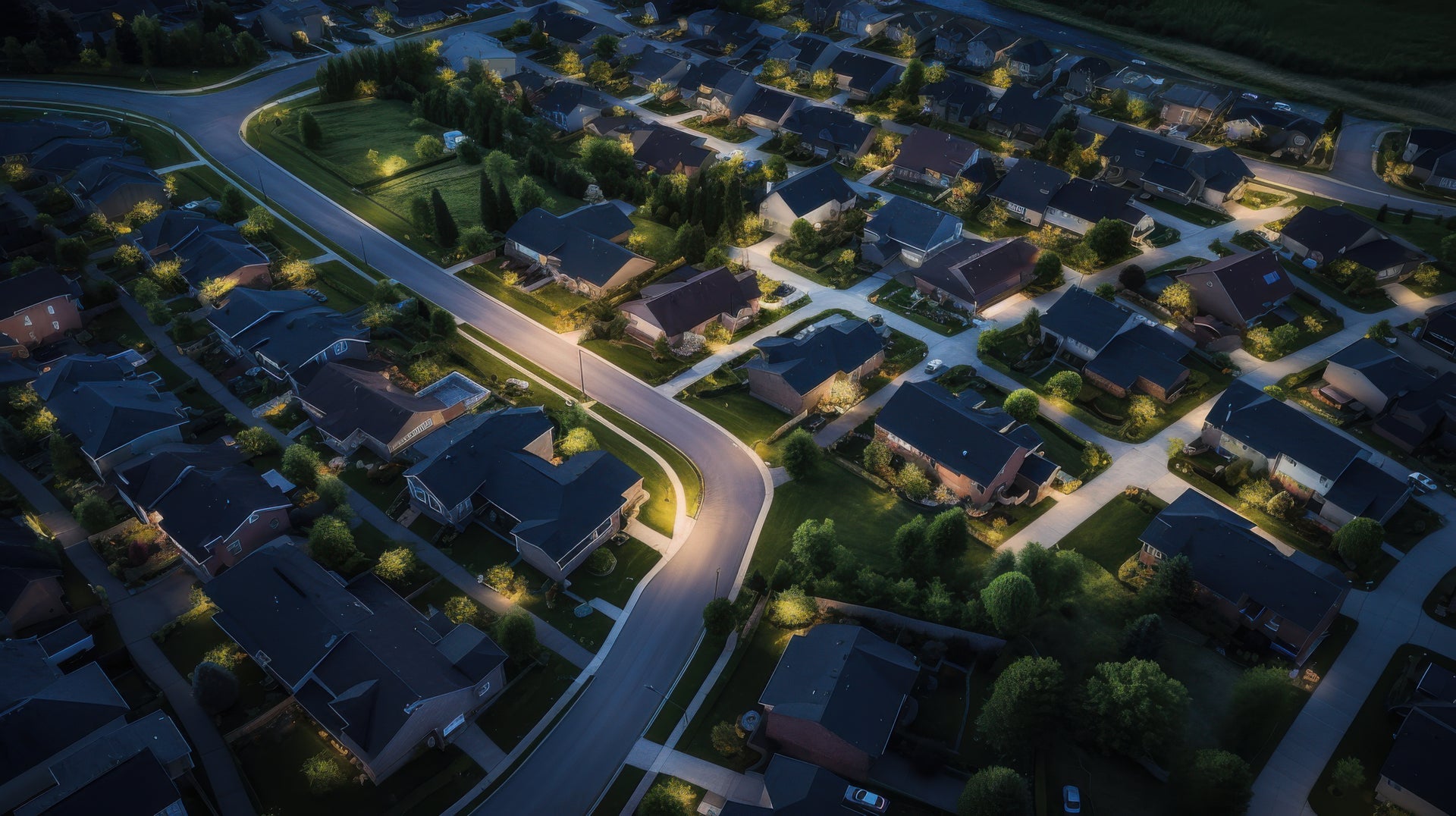Navigating construction material prices amid the new administration’s recent tariffs
Insights and analysis for this piece were provided by Jay Thies and Pete Carroll
Overview
CoreLogic analysis suggests that tariffs could push home construction costs up by 4% – 6% over the next 12 months as material costs adjust to the new landscape. In some cases, tariffs could push prices up by double-digit percentages.
The numbers refused to cooperate. No matter how developers crunched them, low-cost homebuilding was already a challenge. And under the new administration’s proposed tariffs, it looked even worse.
Canadian lumber had climbed 14.5%. Concrete prices jumped 8%. Household appliances were expected to rise by as much as 20%. Suddenly, the question wasn’t how to build affordably — it was whether starter homes could be built profitably at all.
Yet without new housing supply, existing home prices will only keep rising, pushing affordability further out of reach.
This fragile balance between construction costs and affordability has made tariffs a key concern — especially the ones the Trump administration proposed against Canada, Mexico, and China this month.
CoreLogic examined the potential impact of these tariffs on building costs and home prices. For now, tariffs on Canada and Mexico are on hold as negotiations continue. However, CoreLogic’s analysis suggests that if implemented, these tariffs could push home construction costs up by 4% – 6% over the next 12 months as material costs adjust to the new landscape.
10%
The rise in construction material prices over the next 12 months.
These increases would be on top of annual increases in building materials, which typically track inflation. That could mean that in the short term, builders could face up to a 10% increase in material prices.
To compound the situation, early indications emerging from CoreLogic data analysis show that household fixtures, such as appliances, lighting, and cabinetry, could increase in price by 10-20%, and potential new tariffs on Chinese steel could alter project budgets by double-digit percentages.
Putting aside the short-term sticker shock, in the long-term, even minor increases in construction costs put pressure on real estate project profitability, which could have cascading effects on housing affordability.
Already, the average cost of new construction in the U.S. is $422,000. Adding in potential material cost increases from the tariffs would add between $17,000 and $22,000 to that price tag.
Such increases would bring a range of headwinds to prospective homebuyers.
“It’s still early, but we are seeing signs that price surges could appear in the current dynamic environment.”
Jay Thies, CoreLogic’s Vice President of Pricing Analysis and Delivery
Framing Affordability
In 2024, the median cost for a home in the U.S. rose $19,500, and in October 2024, the median home price in the U.S. was $385,000. This sum, though significant, is still less than the average cost of a new build. Still, either option is increasingly out of reach for many Americans, and tariffs appear unlikely to help their plight.
The U.S. Department of Housing and Urban Development defines being cost burdened as spending over 30% of gross income on housing-related expenses. By this measure, buying a median-priced home would push millions — the median annual wage for U.S. workers in 2023 was $48,060, according to the Bureau of Labor Statistics — into this category.
“The economics are now upside down. Even incremental increases in the cost of materials, labor, and equipment make it that much more difficult to build a home profitably. This further disrupts efforts to close the critical gap in U.S. housing supply,” says Pete Carroll, CoreLogic’s EVP of Public Policy and Industry Relations. “If we’re going to create and restore home ownership opportunities for families, we need to fill in this single-family starter home segment that’s missing.”
Some builders like D.R. Horton, the country’s largest homebuilder by volume, are actively trying to introduce affordability by shrinking the square footage of the homes they build as well as offering incentives like mortgage rate buydowns to catalyze demand. Still, the company said the average closing price of those homes increased 1% to $382,200 last year, and in its latest earnings report, homebuilding revenues were down 2%.
Unsurprisingly, rising costs have begun to eat into builders’ profit margins. The average profit margin for a homebuilder in 2024 was 11%, according to the National Association of Home Builders. With possible new tariffs added to the mix, even a seemingly small 4% increase in the cost of building a home would cut deeply into those margins and put affordable building options even further out of reach.
And then there is the knock-on effect: without appealing margins to encourage affordable new construction and ease supply pressures, homebuyer demand will continue to push up the cost of existing houses and the result will be residential gridlock.
Here’s the context: new home construction has remained relatively flat in recent years, and construction declined in 2024. CoreLogic research showed a 5.8% decrease in the number of housing starts last year compared to 2023. Constrained by land availability and rising construction costs (recent CoreLogic data shows costs increased 2.8% in the last quarter of 2024), growth pathways for builders are harder to find.
Material Concerns
So, if imported goods are likely to cost more, domestic building material production will come under further pressure.
CoreLogic’s Vice President of Pricing Analysis and Delivery Jay Thies says that while domestic production could likely accommodate material requirements from the U.S. construction industry, this path will not necessarily help affordability.
If builders choose to circumvent the mooted tariffs by sourcing a higher percentage of materials domestically, a rush on U.S. materials could lead to supply chain bottlenecks that could also result in short-term price hikes.
The U.S. domestic supply chain is stable for now, but its efficiency relies on finely tuned lead times, transportation, and production. A sudden surge in demand could overwhelm the system — just as it did during the pandemic. In 2021, when homebuilding surged, CoreLogic reported a 54% spike in lumber prices.
Lumber demand that year was so high that many builders began bulk buying materials to secure lower price tags. However, this approach turned routine inventory restocking into a frenzy, catapulting prices to record levels and depleting backstock, which further stretched lead times and pushed up costs.
Already, there are indications that a rush on domestic materials would overwhelm current production. Thies points to lumber as a material that is ideal for domestic sourcing, but the decline in the number of housing starts over the past several years has led to the shuttering of sawmills and 8% year-over-year decreases in sales volumes for lumber manufacturers like Boise Cascade.
Other essential materials would be affected too. James Hardie, a large cement manufacturing company that operates in the U.S. and supplies major builders like D.R. Horton, already raised concrete prices in January 2024, citing “higher pulp and cement costs.”
There is one notable exception to this forecast, though: roofing products. Roofing products are already produced almost entirely domestically, and with the new administration signaling its intent to increase domestic oil production, the cost of the raw goods for roofing materials could level off or slightly decline if lower oil costs flowed through the supply chain.
Even if the industry maintains current conditions, all bets may be off when the next natural hazard event arrives. Builders and suppliers may struggle to fulfill the added demands of rebuilding amidst their “business-as-usual” needs.
Already, ongoing constraints in new construction combined with recent increases in large-scale property damage from numerous hurricanes in the southeastern U.S., as well as the more recent California wildfires, are showing signs of straining the construction materials market.
“It’s still early, but we are seeing signs that price surges could appear in the current dynamic environment,” explains CoreLogic’s Vice President of Pricing Analysis and Delivery Jay Thies. “Reconstruction and new development will be initially affected unequally. Reconstruction demand in the wake of the Los Angeles fires is likely to increase prices temporarily, but we are watching longer-term trends to determine how the supply chain will absorb tariffed inventory since there is a possibility that prices could track higher in the mid-term.”
The Real Price of Restoring Homes
In January, wildfires devastated the Los Angeles area. Within days, CoreLogic data showed that 20,000 properties were damaged, 60% of which will be total losses. The scale of these fires will result in a flood of claims for restoration and rebuilding, and this elevated demand will intersect with limited resources to stretch material acquisition and rebuild timelines. It will likely also affect material costs.
Thies explains that a sudden surge in demand for domestic materials could result in a 10%-20% increase in material prices in the short term. For lumber, this would be on top of current prices, which are 4% above the long-term average, according to CoreLogic data.
A similar pattern was seen following the historic fires that scorched Maui in August 2023. The month following the catastrophe, CoreLogic pricing data recorded a spike of 7% in concrete prices.
Although catastrophes do cause spikes in prices due to a sudden wave of demand, the long-term effect of these prices in the overall reconstruction cost trend tends to be smoothed by time. However, the impact of tariffs may prove to be a tipping point on price if they come to bear.
Even incremental increases can have outsized effects. From shaving percentages off margins to forcing companies to re-source materials either domestically or from countries like Vietnam, India, and Indonesia, which are not currently subject to such tariffs, these possible new federal tariffs will have consequences that will be felt by everyday homeowners and businesses.
Construction Categories Facing Major Tariff Burdens
While not all imports would be affected equally, there are a few major categories where additional tariffs would have consequences for the property market.
- Canadian Wood Products: Traditional residential homes are primarily built out of wood and wood-based products, and a large percentage of wood used in the U.S. comes from Canada, a country that is squarely a part of Trump’s proposed tariff plan. While the new tariffs would certainly increase overall costs, Canadian exports were not previously free from the extra expense required by American import taxes. Last August, the U.S. Department of Commerce increased tariffs on Canadian wood exports from 8.05% to 14.54%. While this did impact prices, it also served to further push the American construction industry to find alternative sources of lumber. Increasingly, Oregon, Washington, and states in the southeast are replacing Canada as the primary supplier of lumber products, which has somewhat mitigated price pressures.
- Chinese Steel: New tariffs on Chinese steel could alter project budgets by double-digit percentages. Although the proposed tariffs would primarily affect commercial construction, such a dramatic cost increase to general steel building prices has the potential to influence project viability and further dampen the commercial market, which is already experiencing depressed demand. At the same time, continued depressed demand might offset some price hikes in the short term.
- Mexican and Canadian Concrete and Cement: Increases in concrete material components would affect most aspects of the construction industry. From residential to commercial, approximately 25% of cement used in the U.S. is imported, and Canada and Mexico are major suppliers. Tariff changes targeting these imports could increase costs, but commercial construction would likely bear the brunt of the burden.
- Housing fixtures: Early estimates from CoreLogic show that household fixtures, such as appliances, lighting, and cabinetry, could increase 10-20%. However, this increase would have a minimal impact relative to the total cost of building a home. Further analysis is required to fully gauge the scope of potential impacts.
Notably, some sectors like roofing shingles and masonry products would see minimal impact due to a heavy reliance on domestically sourced materials. A combination of high shipping costs for these heavy materials along with robust sources of domestic supply should keep increases in these products at a more normalized level. Furthermore, proposed increases in oil production from the new administration could reduce raw material costs for asphalt-based roofing and other petroleum-based construction materials and products.
©2025 CoreLogic, Inc. All rights reserved. The CoreLogic content and information in this blog post may not be reproduced or used in any form without express accreditation to CoreLogic as the source of the content. While all of the content and information in this blog post is believed to be accurate, the content and information is provided “as is” with no guarantee, representation, or warranty, express or implied, of any kind including but not limited to as to the merchantability, non-infringement of intellectual property rights, completeness, accuracy, applicability, or fitness, in connection with the content or information or the products referenced and assumes no responsibility or liability whatsoever for the content or information or the products referenced or any reliance thereon. CoreLogic® and the CoreLogic logo are the trademarks of CoreLogic, Inc. or its affiliates or subsidiaries. Other trade names or trademarks referenced are the property of their respective owners


